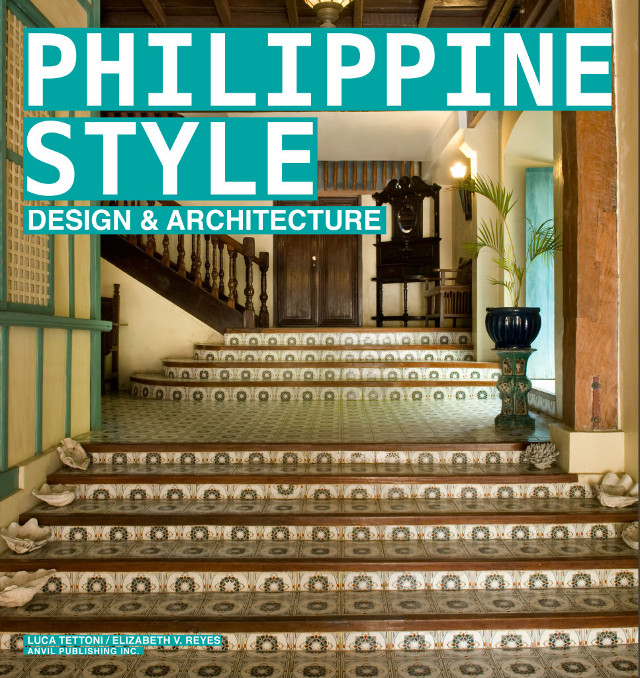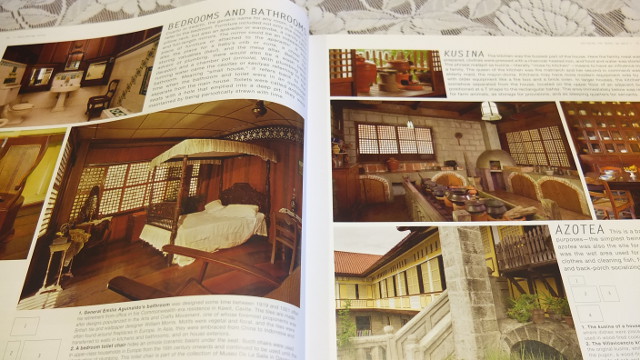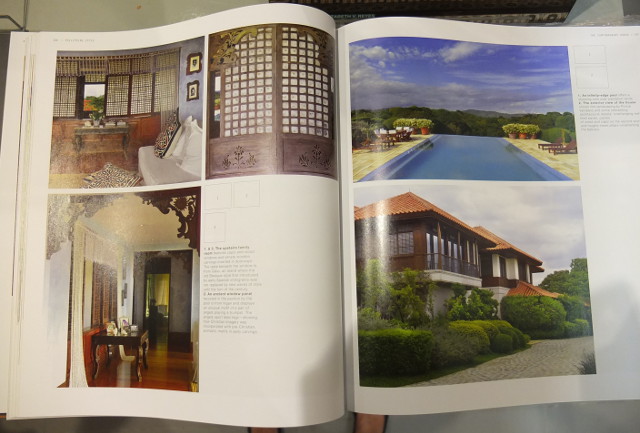SUMMARY
This is AI generated summarization, which may have errors. For context, always refer to the full article.

MANILA, Philippines – What exactly is Philippine architecture?
Like many aspects of art and culture, most Filipinos find it hard to identify uniquely Filipino architectural styles. We are bombarded with images of Gothic European cathedrals or minimalist Shinto temples in Japan but what architectural styles can we call our own?
“Philippine Style: Design & Architecture” by Elizabeth V. Reyes and Luca Tettoni is a highly-readable, highly-visual coffee table book that seeks to answer that question.
The 208-page work is a comprehensive collection of photos and write-ups of the most beautiful Philippine homes that showcase elements of the elusive Philippine architectural style.
Reading through the book page by gorgeous page is like getting to know a long-lost friend or relative. Readers will delight in seeing familiar elements of a traditional Philippine home (from Murano glass mirrors to those ubiquitous woven rocking chairs our grandparents sit on) accompanied by fresh, interesting trivia about them.
Traditions that live on
The book begins by introducing readers to the classic bahay kubo and bahay na bato, two traditional architectural styles that reflect our nation’s history and culture.
Much of the first half of the book deals with the bahay na bato, which architect Dominic Galicia says in his introduction to the book, is disappearing.
The reader is shown the various parts of a typical bahay na bato like the zaguan on the first floor between front door and stairs, the wide formal salas, the comedor (dining room), volada (enclosed wraparound balcony), ventanillas and the kwarto (bedroom).
A journey then begins with photographer Luca Tettoni’s breath-taking photographs guiding us through some of the country’s most beautiful, well-preserved bahay na bato mansions. The luscious images capture the color, texture and mood of the houses, some airy and friendly, others stiff and imposing.
Choice houses
The first few pages take readers to Vigan, a UNESCO World Heritage site that is home to Villa Angela (now a heritage hotel), Syquia mansion and Quema mansion built by wealthy Chinese-Ilocano traders in the 19th century.
A few pages after, readers will find themselves in the ancestral mansions of Batangas, Taal, Iloilo, Negros and Sairaya. Malabon’s gorgeous Art Noveau homes also make a courtly appearance.
Adding to the charm and authenticity of the book are the stories of the home owners themselves. Author Elizabeth Reyes vibrantly narrates the colorful history of the families who built, lived in and preserved the houses.
Casa Villavicencio in Taal, for example, was home to Doña Gliceria Villavicencio who Gen Emilio Aguinaldo had given the title “Godmother of the Revolutionary Forces” for her role in supporting the revolutionaries against Spain.
A smaller house adjacent to Casa Villavicencio, called the Gift House, served as living quarters and hideout for visiting generals of the revolution.
The Syquia mansion in Vigan belongs to the family of the wife of Elpidio Quirino, 6th president of the Philippines.
The Alunan-Lizares mansion in Talisay, Negros was once the cherished home of the feared and respected Tana Dicang or Doña Enrica Lizares who became barrio captain aside from managing a sugar plantation.
At one time, Tana Dicang entertained no less than Commonwealth President Manuel Quezon in the mansion’s elegant dining room.
Reyes’ narration fast-forwards to the present-day owners and the creative ways they have preserved the houses. Some are now bed-and-breakfasts, galleries, cafés or museums. They have become tangible evidence of adaptive reuse in which heritage homes are used for community-related purposes without drastically changing the structure or look of the building.
This has helped fund the restoration of the houses and keeps them relevant to the community and country at large.
Modern reinterpretations
But this book also looks forward.
Its second chapter is devoted to contemporary homes that fuse many of the elements of the bahay kubo and bahay na bato with modern aesthetics and practicality.
Readers get a rare glimpse of gorgeous modern homes of the wealthy: architect Angelo Mañosa’s eco-house in Ayala Alabang, Bea Zobel’s sprawling Calatagan estate, artist Benji Reyes’ all-wood Antipolo abode, fashion designer Cesar Gaupo’s modern hut by the Majayjay River in Laguna, and more.
The last chapter is a designer portfolio featuring the iconic works of contemporary Filipino designers from the striking chairs of Kenneth Cobonpue to Benji Reyes’ wood art to the eclectic pottery of Jon and Tessy Pettyjohn.
By the end of the book, readers will not only be endeared to a newly-discovered idea of Philippine style, but will take pride in it. This book urges readers to not just live in their houses but to look at them in a new light: as storytellers and repositories of our culture. – Rappler.com
Add a comment
How does this make you feel?


There are no comments yet. Add your comment to start the conversation.